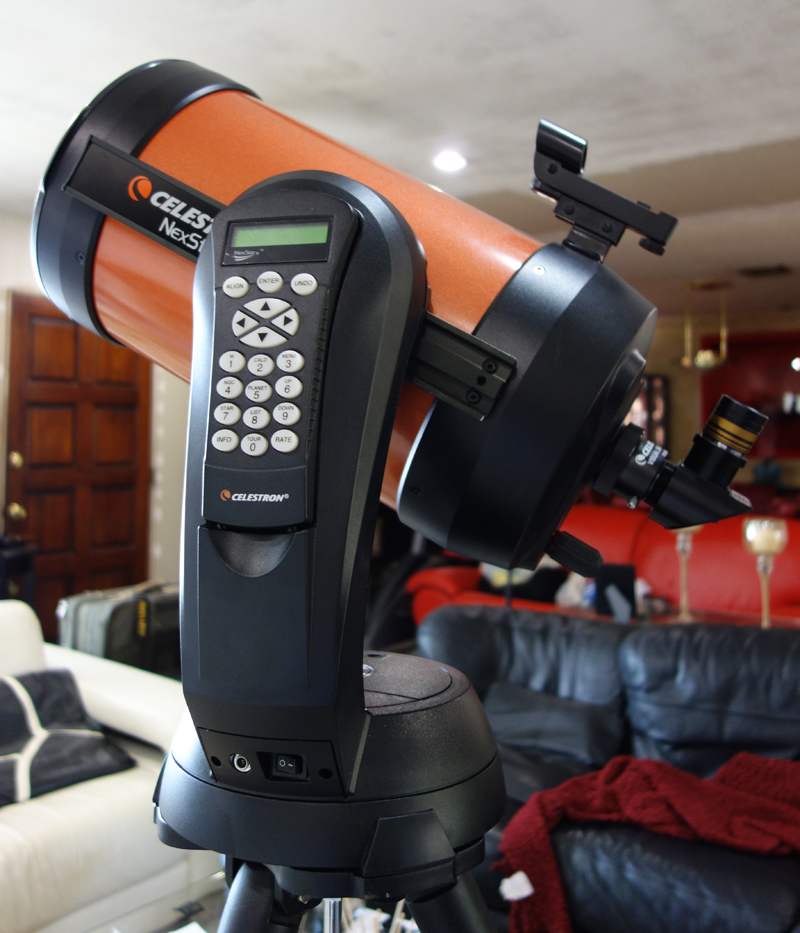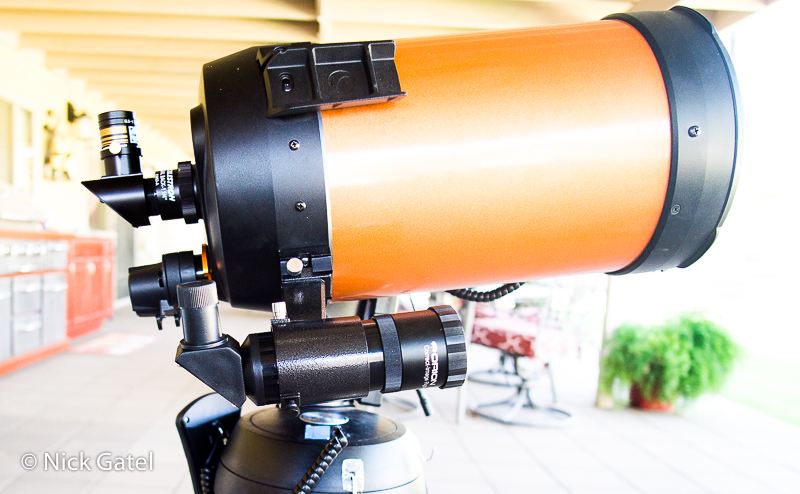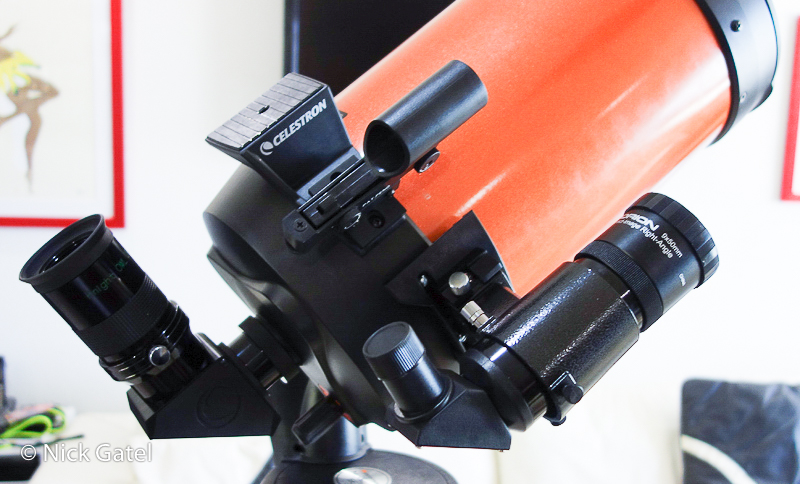
Finder Scopes
The higher the magnification a telescope has the more difficult it is to locate objects in the sky.
To overcome this, a finder scope is often mounted on the telescope to make it easier to locate objects. A finder scope has low magnification and a field of view much wider than a telescope. Finder scopes make it easier to locate objects, and are useful when aligning the scope to the night sky and are especially useful with computerized “go-to” telescopes.
What follows is a brief explanation of finder scopes and what I use.
Finder scopes do need to be aligned with the telescope. When a finder is first installed on a scope and an object is found, the telescope may not be centered on the object, but it should be close enough to at least see the desired object.
Now the telescope is adjusted so the object is centered in the eyepiece, meaning the object will no longer be centered in the finder scope. Next the finder scope is adjusted so the object is also centered in the finder. After this adjustment, slewing the telescope and using the finder scope to center the object, will also center it in the main telescope.
Types of Finder Scopes
There are two basic kinds of finder scopes:
Red-Dot Finders
“Red-dot” finders use a laser beam to point to an object in the sky. Usually these have red lasers, thus “red-dot” finders. However some use different color beams. There is no magnification in these finders.
My NexStar 8se came with an inexpensive red-dot finder. One of my first purchases was to upgrade my red-dot finder with the popular Telrad Finder.
It was a major improvement, but I found I just didn’t like these kinds of finders.
Achromatic Finder Scopes
Achromatic finder scopes are miniature telescopes. They have lenses in them and also magnify the view to help locate objects. Low cost finders will show a reversed image, sometimes making it more difficult to adjust the telescope mount. More expensive achromatic scopes use a prism to keep the object oriented and some come with a diagonal (90 degree elbow) to make viewing easier.
Years ago I replaced my Telrad Finder with an Orion brand 9×50 Right-Angle Correct-Image Finder. I still use it and have been completely satisfied with its operation.


Most folks mount their finder on the top of the telescope. I found it more convenient to mount mine near the bottom, which made it easier to look through and the eyepiece was close to the level of the telescope’s eyepiece. Plus it was easier and more convenient to mount my DSLR camera on the top section of the telescope.
Which Type is Best?
Best for one person can be the worst for someone else and visa versa. There are two camps when it comes to amateur astronomers — the red-dot camp and the achromatic camp.
I like the achromatic because it does magnify the view and has a “cross-hair” in the viewer. The red-dot makes it easier to find things in the night sky if one is moving from object to object and the telescope is not a computerized go-to scope.
The Best of Both Worlds
For a time I mounted both the red-dot and the Orion achromatic finder on my telescope.

I removed the red-dot when I found myself no longer using it.
This website may be compensated for linking to other sites for sales of products. As an Amazon Associate I earn a small fee from qualifying purchases at no additional cost to the purchaser.